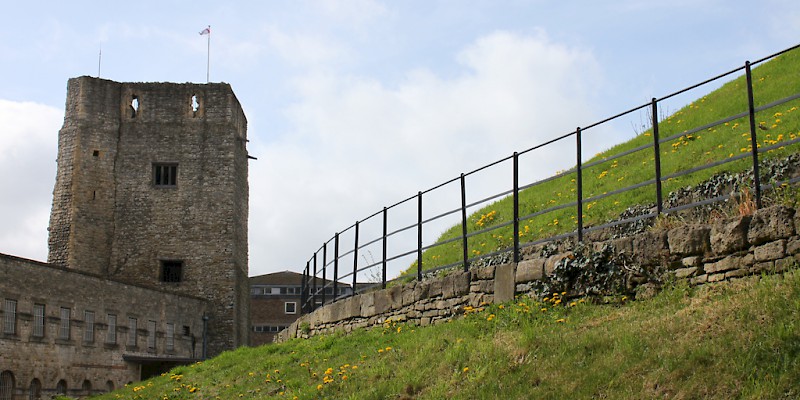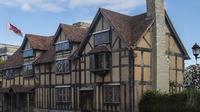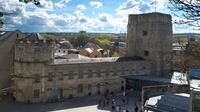Oxford Castle ★☆☆

Sections of this partly-ruined medieval castle dates to the 11C
Ruinous and used as a prison from the 1750s until 1996, the central keep of the original 11C Norman-era castle remains—now called the St. George's Tower (climb it for some nice views)—surrounded by extensions from the 14C and 15C.
The original castle was built in 1071–73 by Norman baron Robert D'Oyly the Elder, one of the companions of William the Conqueror.
His nephew and heir, Robert D'Oyly the Younger, got caught up in the Anarchy of the 1140s, and when he switched allegiance from King Stephen to her cousin, Empress Matilda, who quickly based herself here at the castle. Stephen besieged the town and castle in the fall of 1142, setting up his siege engines on a pair of siege mounds beside the castle and proceeded to wait Matilda out. The Empress actually (supposedly) escaped over the walls that December and, disguised in snow, crossed the frozen stream and snuck through the lines, making her way to Abingdon Castle. She surrendered to Stephen the following day.
King Henry III was the first to turn part of the castle into a prison, in the 13C, specifically for "troublesome" students from the University. After the 17C Civil War, it pretty much became a full-time prison. The prison was vastly expanded in the late 1700s, and again in the 1860s, and didn't close until 1996.
Although some sections have been open to the public in the past, the castle as a heritage site didn't open until 2006.
Large parts of the prison have been converted into the Malmaison hotel.
TicketsTips
You can only visit on a guided tour, which lasts for one hour.
The last tour of the day departs at 4:20pm.

















